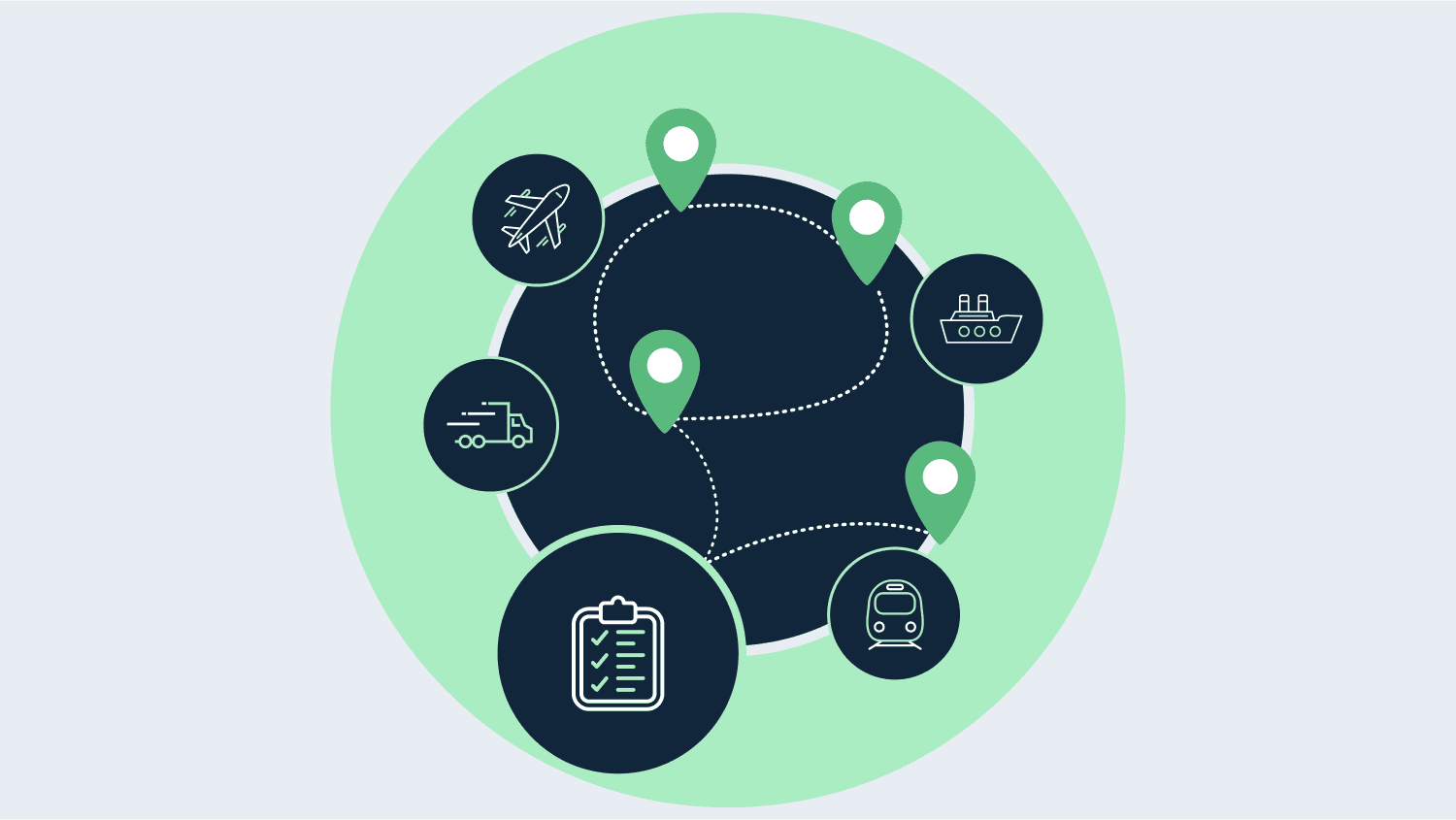In the rapidly evolving business landscape, a staggering 50% of new enterprises fail within their first five years, largely due to suboptimal design and planning of their supply chains.
Designing a supply chain can be really complex. Businesses need to figure out the best network footprint, decide how products flow most efficiently and smoothly from source to customers, predict customer demand with accuracy, and organize transportation with cost and environment in mind.
Reliance on traditional, manual methods for managing these components is increasingly impractical. These outdated approaches struggle to adapt to the dynamic nature of today’s market, where agility and responsiveness are key to survival and success.
Modern businesses must adopt more sophisticated, technology-driven solutions to stay competitive and avoid becoming part of the grim statistic of early failure. This is where Sophus rises to the challenge and saves the day with its six distinctive “super powers”!
Enhancing Your Supply Chain with 5 Key Value-Adding Points with Sophus
Let’s dive into five main ways Sophus helps solve these big Supply chain network design-related issues.
Superpower 1: Optimization Algorithms
The challenge of inefficiency in traditional supply chain management is more costly than many realize.
The number of supply chain disruptions worldwide is on the rise. To better understand these inefficiencies, consider the following:
- Accidental network footprints lead to inefficient and costly operations.
- Inventory management struggles, leading to overstocking or stockouts.
- Inaccurate demand forecasting results in either excess inventory or stock shortages.
- Inefficient transportation routes and methods lead to higher costs and longer delivery times.
- Manual processes are prone to errors and delays, hindering overall efficiency.
- Lack of visibility and transparency across the supply chain makes it challenging to identify and resolve issues promptly.
- Ineffective use of resources, such as labor and warehouse space, leads to higher operational costs.
This is where Sophus steps in with its innovative approach to optimization:
Sophus Solution: Using the Power of Optimization
Unlike Excel, which merely calculates, Sophus goes above and beyond by exploring all possibilities and recommending the best course of action. And when it comes to comparing with other optimization tools on the market, Sophus truly shines with its superior algorithm
Here’s why Sophus stands out:
- Off-the-Shelf Software: It’s easily accessible as off-the-shelf software, eliminating the need for complex setup processes. Businesses can seamlessly integrate and benefit from advanced forecasting without the usual implementation headaches.
- Gradient Boosted Multivariate Regression Algorithm: Sophus utilizes a sophisticated gradient boosted multivariate regression algorithm, which considers multiple variables simultaneously. This leads to enhanced prediction accuracy and provides a holistic view of factors influencing demand.
- Forecast Probabilistic Output: Sophus doesn’t just predict demand; it provides a probabilistic output. This feature enables businesses to anticipate potential deviations or variability in demand forecasts, aiding in informed inventory planning and risk management.
- User-Defined Causal Factors: Flexibility is key. Sophus allows businesses to incorporate user-defined causal factors like holidays, events, and external regressors, creating a more nuanced and context-aware forecasting model.
- Product Life Cycle Consideration: The algorithm takes into account product life cycles, ensuring adaptability to changes in the product portfolio.
- Impact of Price Changes: Sophus lets users input product price changes as a causal factor. This capability helps anticipate the effects of pricing strategies on consumer demand, aiding in strategic decision-making.
- Scenario Building Capabilities: With the intuitive design of SophusX, users can easily build and configure scenarios. This empowers them to explore various what-if scenarios, facilitating better decision-making.
With these remarkable features, Sophus is truly revolutionizing supply chain management and setting new standards in optimization and forecasting.
Exploring All Possibilities
What sets Sophus apart is its ability to do more than “calculate.”
It really digs deep, checking every part of how your goods are supplied to generate the best ideas.
Whether it’s tackling network design questions like determining the optimal number and locations of distribution centers, identifying the most efficient production routes and sites, or fine-tuning sales and operations planning (S&OP) to decide when to source what and how much, Sophus handles it all with ease.
But wait, there’s more. Sophus doesn’t stop at optimization—it excels at it. By considering all possible combinations of business levers, Sophus doesn’t just deliver a feasible answer; it presents the best overall solution.
Superpower 2: Scenario Testing
In the complex world of managing how products get from start to finish, there’s always uncertainty. Things like changing customer demands or unexpected problems can make it hard for businesses to keep things running smoothly and successfully.
In 2021, there were 11,642 disruptions worldwide. North America had the highest share of disruptive events.
This is why scenario testing is so important in supply chain network design. It allows businesses to consider different “what-if” situations, see possible challenges ahead of time, find ways to improve, and make smart choices to avoid risks.
Here’s why scenario planning is necessary:
- Prepares for a range of potential outcomes, from minor fluctuations to major disruptions.
- Uncovers vulnerabilities in the supply chain, enabling the implementation of strategies to strengthen resilience.
- Provides valuable insights for strategic decision-making in uncertain environments.
- Optimizes resource allocation, minimizing costs and maximizing profitability.
- Fosters agility by enabling quick responses to changing market dynamics and trends.
- Builds stakeholder confidence by demonstrating foresight and preparedness.
Using Sophus as a Digital Sandbox
Sophus, with its sophisticated algorithms and advanced modelling capabilities, serves as a digital sandbox for supply chain professionals. It uses smart programs and detailed models to let users experiment safely like in a digital playground.
With Sophus, companies can easily try out different plans and see how they affect the movement of goods and costs. Sophus gives them the power to make choices based on solid data with sureness.
Sophus enables businesses to:
- Test alternative scenarios: Sophus allows users to simulate various “what-if” questions, providing valuable insights into potential outcomes and helping businesses anticipate challenges.
- Understand the size of the prize and cost: By modeling alternative scenarios, Sophus enables businesses to quantify the potential benefits and costs associated with different strategies, facilitating informed decision-making.
- Make decisions with the best information possible: By providing a digital platform for scenario testing, Sophus ensures that decisions are based on comprehensive data analysis and robust modeling, minimizing risks and maximizing opportunities for success.



Figure: Scenarios comparing current network with close 4 DCs or close 8 DCs
Superpower 3: Automation
In the fast-changing world of supply chain management, automation is now very common.
Yet, even though automation is becoming more important and widespread, many companies still need to start using it more. This delay can cause big problems and might lead to serious setbacks for these companies.
Issues, when businesses neglect automation, are:
- Manual inefficiencies: Time-consuming tasks hinder productivity.
- Error risks: Manual processes lead to inaccuracies and costly mistakes.
- Scalability limitations: Manual methods need to be revised to accommodate business growth.
- Missed optimization chances: Lack of automation overlooks efficiency improvements.
Streamlining Processes with Sophus X and Dastro
Sophus X and Dastro represent a paradigm shift in supply chain automation, offering a myriad of benefits that transcend traditional manual processes.

Figure: Integrated Dastro workflow in Sophus X
With automation, Sophus X and Dastro revolutionize supply chain efficiency in the following ways:
- Reducing Manual Work: Sophus X and Dastro streamline tasks, freeing resources for analysis.
- Facilitating Model Refresh: Automation keeps models updated for agile decision-making.
- Ensuring Robustness: Automated audit trails enhance result reliability.
- Saving Time: Streamlined processes allow focus on value-added tasks.
- Reducing Human Errors: Automation minimizes manual intervention, enhancing accuracy.
- Empowering Continuous Improvement: Automation identifies inefficiencies for ongoing enhancement.
Superpower 4: Facilitating collaboration
Effective collaboration is key to doing a great job in managing supply chains. When businesses encourage their teams to work closely and share ideas, they can solve difficult problems, adjust easily to new market trends, and come up with fresh ideas.
Sharing knowledge through teamwork makes the process smoother and helps everyone aim for constant growth and better ways of working.
Real-time, Multi-user Collaboration in Sophus
Sophus facilitates real-time, multi-user collaboration, revolutionizing how teams work together in supply chain management. With role-based access, team members can seamlessly collaborate on various aspects of the supply chain, from debugging models to updating functions.
This collaborative approach reduces duplicated work, promotes knowledge sharing, and improves efficiency and security.
Maximizing Productivity Through Simultaneous Updates
Sophus enables simultaneous updates, allowing team members to work on different functions of the model concurrently.
Whether refreshing demand data or creating new capacity scenarios, team members can collaborate in real time, maximizing productivity and accelerating decision-making.
Worrying about stepping on each other’s toes? No need! When one user has kicked off an optimisation run, the model inputs will be locked so that other users cannot accidentally overwrite your inputs!
This collaborative problem-solving approach fosters innovation and drives continuous improvement in supply chain operations.
Superpower 5: Insights Through Powerful Visualization
Visualization is really important because it helps turn basic data into useful information. This lets companies make smart choices clearly and confidently. When you visually show complicated information, it’s easier to understand, tells a better story, and can lead to new ideas.
This makes businesses more innovative and quick to adapt in managing their supply chains.
Sophus Powerful Visualization Tools
Sophus boasts a suite of powerful visualization tools that empower users to unlock the full potential of their data. From insightful reporting to customizable views, Sophus offers a range of options to suit diverse needs and preferences.
With tables, maps, default BI graphs and customizable outputs, users can effortlessly analyze data, identify trends, and gain deeper insights into their supply chain dynamics.

Figure: Map of Omni-Channel distribution in the UK
Driving Informed Decision-Making with Visual Storytelling
Visual storytelling is a powerful tool for conveying complex ideas and driving informed decision-making. By weaving data-driven insights into compelling narratives, businesses can effectively communicate key findings, align stakeholders, and chart a course towards supply chain excellence.
Sophus enables users to create engaging dashboards and presentations that captivate audiences and inspire action.

Figure. Cost-to-serve breakdowns compare the as-is baseline with optimized scenarios, highlighting the profitability by product by customer.
Inspiring Innovation and Agility Through Visualization
Visualization is more than just a reporting tool; it’s a catalyst for innovation and agility. By presenting data in a visually appealing and interactive manner, Sophus sparks creativity, encourages exploration, and prompts rapid decision-making.
With Sophus’ customizable views and dynamic dashboards, businesses can adapt quickly to changing market dynamics, seize opportunities, and stay ahead of the competition.

Figure. Dashboard showing the optimal fleet size and route details breakdown by scenarios
Bonus Perk: Ease of Use
Another remarkable superpower of Sophus is its unparalleled ease of use. Crafted by a team with extensive expertise in supply chain design and planning, the Sophus X platform stands out for its user-centric approach.
At the core of Sophus’s ease of use is its intuitive design, which prioritizes customer experiences. The platform’s features are carefully tailored to streamline every aspect of supply chain management, ensuring a seamless user experience.
Here’s how Sophus makes supply chain management effortless:
- Data Validation: Sophus simplifies data validation, ensuring that only accurate and relevant information is used for decision-making. This helps prevent errors and enhances the reliability of forecasts and insights.
- Concise Schema: With a concise schema, Sophus organizes data in a clear and structured manner, making it easy for users to navigate and understand complex supply chain processes.
- Infeasibility Diagnostics: Sophus includes infeasibility diagnostics to identify potential issues or constraints in supply chain operations. This proactive approach allows users to address challenges before they escalate, optimizing efficiency and performance.
- Rapid Baseline: Sophus enables users to establish a baseline quickly, providing a solid foundation for scenario analysis and decision-making. This rapid baseline setting accelerates the planning process, saving time and resources.
- Fast and Smooth UI: The user interface of Sophus is designed for speed and efficiency, offering fast and seamless navigation. Users can access critical information and perform tasks with ease, enhancing productivity and workflow efficiency.
Conclusion: Empowering Supply Chain Excellence with Sophus
Having an efficient supply chain network is very important. Sophus steps in as a big help for this. It tackles the tough job of making things more efficient and gives companies what they need to deal with complicated supply chain issues.
Sophus provides everything from testing different situations, automating tasks, and working together better to making things easier to see and understand. This helps solve long-standing problems of needing to be more efficient in planning and managing supply chains.
With Sophus on their side, businesses can achieve great success in handling their supply chains with certainty and clear direction.










